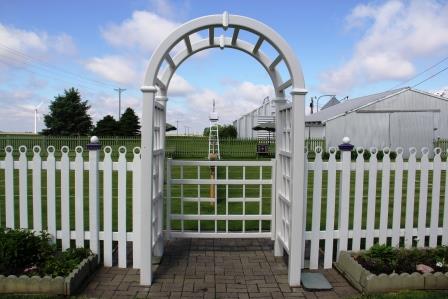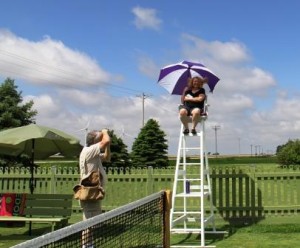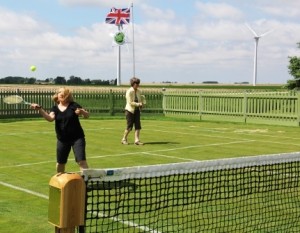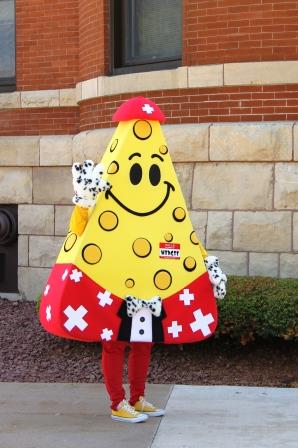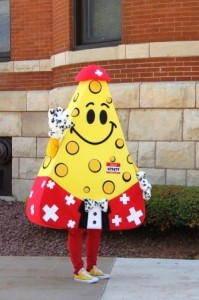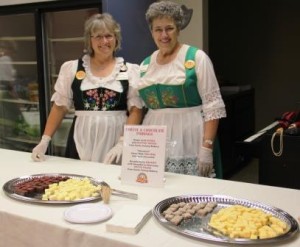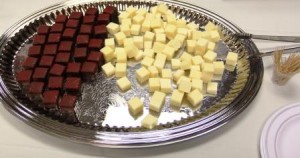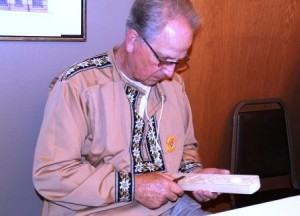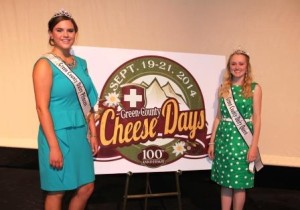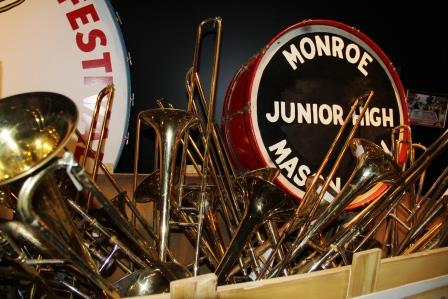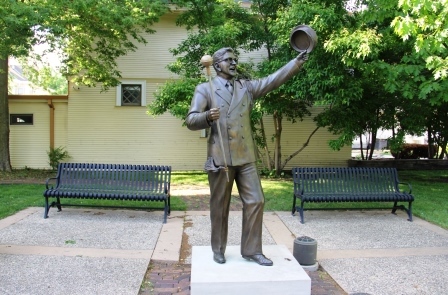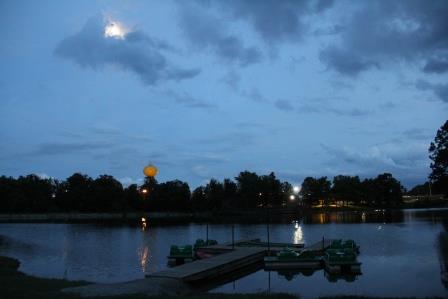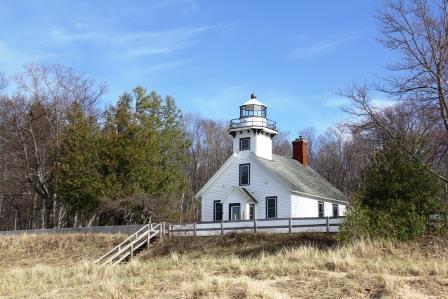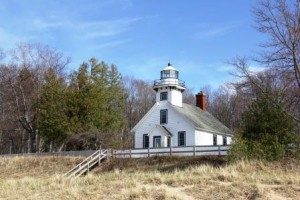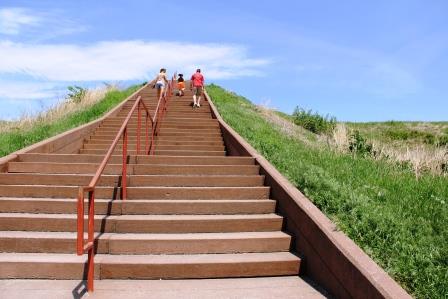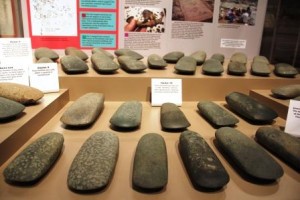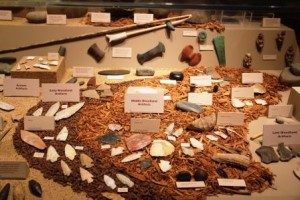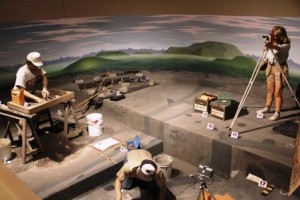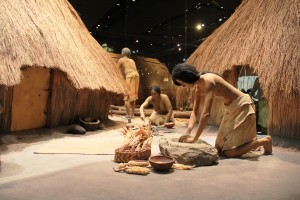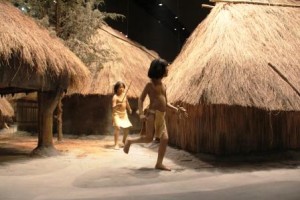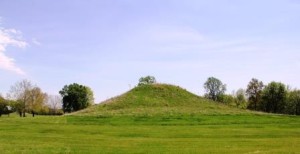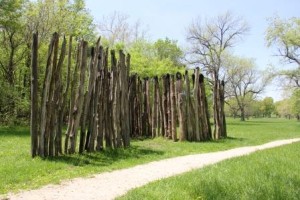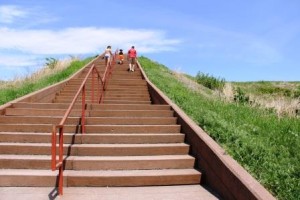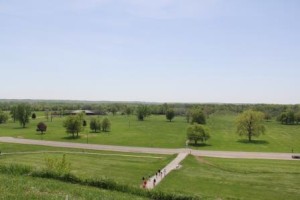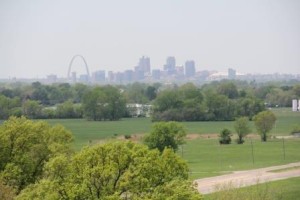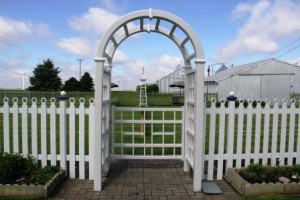 The van we were riding in traveled down the country road past corn and soybean fields, the crunch of gravel beneath us, a trail of dust left behind. I thought we were headed to a park-like setting to visit the All Iowa Lawn Tennis Club in Charles City, so when the van carrying several travel writers turned into a rural farm, I was more than a little surprised. Here in front of us next to the farmhouse was a beautifully manicured Wimbledon court look-alike.
The van we were riding in traveled down the country road past corn and soybean fields, the crunch of gravel beneath us, a trail of dust left behind. I thought we were headed to a park-like setting to visit the All Iowa Lawn Tennis Club in Charles City, so when the van carrying several travel writers turned into a rural farm, I was more than a little surprised. Here in front of us next to the farmhouse was a beautifully manicured Wimbledon court look-alike.
Mark Kuhn didn’t intend for people to come from all over to play when he turned the cattle feedlot on his Iowa farm into a grass tennis court. He built it for himself, his family and friends, following a dream he had for decades.
Don’t miss a Midwest Wanderer post. For a FREE subscription, enter your e-mail address in the Subscribe2 box to the left and click Subscribe.
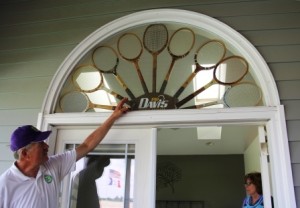 As a young child, Kuhn listened to the Wimbledon tournament on the BBC over his grandfather’s shortwave radio and became enthralled with it. He took up tennis, his first racquet bought for him with S&H Green Stamps, and for 40 years he talked about building a grass court on the family farm. That first racquet is still in Kuhn’s collection, along with a racquet that was used at Wimbledon over a hundred years ago.
As a young child, Kuhn listened to the Wimbledon tournament on the BBC over his grandfather’s shortwave radio and became enthralled with it. He took up tennis, his first racquet bought for him with S&H Green Stamps, and for 40 years he talked about building a grass court on the family farm. That first racquet is still in Kuhn’s collection, along with a racquet that was used at Wimbledon over a hundred years ago.
After discussion with his wife Denise and other family members and with their blessing, Kuhn researched turfgrass management at Iowa State University and got underway with the project with much help from the family. In September 2003, 100 people attended the grand opening of the All Iowa Lawn Tennis club with an exhibition match featuring Coe College players and alumni.
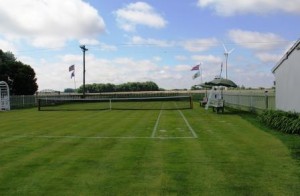 Word spread about the grass court after media coverage, including a 2007 article in Tennis magazine, and people have been coming to play on it ever since. Folks from 35 different states, as well as from overseas, have played on the court, which is easier on the knees and cooler than playing on a hard surface court. The ball bounces lower and slower on a grass court, and even lower on a wet court, as we found out. Our visit followed a day of heavy rainfall.
Word spread about the grass court after media coverage, including a 2007 article in Tennis magazine, and people have been coming to play on it ever since. Folks from 35 different states, as well as from overseas, have played on the court, which is easier on the knees and cooler than playing on a hard surface court. The ball bounces lower and slower on a grass court, and even lower on a wet court, as we found out. Our visit followed a day of heavy rainfall.
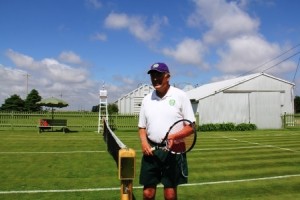 Kuhn, a full-time farmer, spends about an hour a day on the court’s maintenance. The grass, the same type used on golf course greens, is on a base of sand and requires occasional rolling to keep it smooth, and of course, lines need to be reapplied regularly. Kuhn has attended Wimbledon twice, and is on a first-name basis with the Wimbledon groundskeeper, Eddie Seaward, who has shared maintenance secrets.
Kuhn, a full-time farmer, spends about an hour a day on the court’s maintenance. The grass, the same type used on golf course greens, is on a base of sand and requires occasional rolling to keep it smooth, and of course, lines need to be reapplied regularly. Kuhn has attended Wimbledon twice, and is on a first-name basis with the Wimbledon groundskeeper, Eddie Seaward, who has shared maintenance secrets.
Features continue to be added to the court to make it even more Wimbledon-like from the gate to wooden net posts. The latest addition is an umpire chair.
Our group was invited onto the court to try it out. Not being a tennis player, I was thrilled that I even served the ball over the net, though I wasn’t so good when it came to hitting the ball that was served to me back over the net.
One can’t help but be reminded of the movie The Field of Dreams when visiting the All Iowa Lawn Tennis Club, especially both being built on Iowa farms. It’s no surprise that it’s been dubbed “The Court of Dreams.”
The Kuhns allow tennis players to use the court free of charge, but require reservations. Visit the All Iowa Lawn Tennis Club web site to request a reservation and for further details.
Disclosure: My visit to the All Iowa Lawn Tennis Club was hosted by the Iowa Tourism Office, but any opinions expressed in this post are my own.
Thank you for reading Midwest Wanderer. Don’t miss a post. Enter your e-mail address below and click Subscribe to be notified whenever I publish another post. Subscription is FREE. After subscribing, be sure to click the link when you get the e-mail asking you to confirm. – Connie

